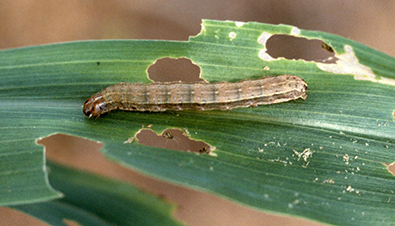Read the latest information on
Foot-and-mouth disease

A forum – covid-19 style – brought ‘together’ entomologists from affected jurisdictions and people from research organisations, governments and affected industries to help develop a national management plan and decide on research projects
The Australian Government has provided a grant of $600,000 to Plant Health Australia (PHA) to fill some of the R&D gaps for the management of fall armyworm (Spodoptera frugiperda) following its arrival via natural pathways in January 2020.
Stuart Kearns, National Manager for Preparedness and RD&E at PHA, said the grant will provide a funding boost for targeted research and development projects.
“To help us identify some of these gaps PHA hosted a forum, that brought all the stakeholders ‘together’.”
Participants included entomologists from affected jurisdictions and people from research organisations, governments and affected industries.
“The forum outcomes will help us develop a national management plan and inform which project areas to focus on.”
Fall armyworm can be a serious agricultural pest. The caterpillar stage of the moth’s lifecycle can damage and destroy a wide variety of crops causing large economic losses if it’s not controlled.
It also feeds on native and garden plants, so it can be a serious problem in national parks and backyard gardens.

Projects will investigate fall armyworm genetics, pesticide resistance, commercial and native hosts, and modelling of seasonal impacts on population dynamics
Generally, projects will investigate fall armyworm genetics, pesticide resistance, commercial and native hosts, and modelling of seasonal impacts on population dynamics.
“The results of the R&D should help to better manage the pest and minimise its impact on growers.”
For more information visit www.agriculture.gov.au/pests-diseases-weeds/plant/exotic-armyworm